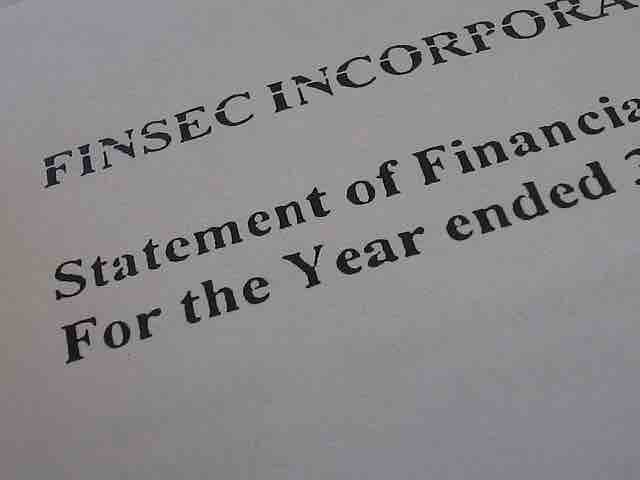The Purpose of Financial Statements
At the end of each accounting cycle, a company prepares financial statements. The purpose is to provide relevant financial information for both internal and external users.
The four most common financial statements are the balance sheet, income statement, statement of cash flows and the statement of stockholder's equity.
Each statement has a specific purpose; the income statement reflects a company's profitability, while the statement of retained earnings shows the change in retained earnings between the beginning and end of a period (e.g., a month or a year). The balance sheet reflects a company's solvency and financial position and the statement of cash flows shows the cash inflows and outflows for a company over a period of time.
Together these four statements show the profitability and strength of a company.

Financial Statements
The financials statements show a company's profitability.
How the Statements Are Interconnected
The income statement reports the profitability of a business by comparing the revenues earned with the expenses incurred to produce these revenues. If revenue exceeds expenses for the period then a net income occurs. If expenses exceed revenue then a net loss is the result. The income statement, specifically, net income reconciles the beginning (prior ending period) balance sheet to the current balance sheet.
The statement of shareholder's equity connects the income statement and the balance sheet. The statement of shareholder's equity explains the changes in retained earnings between two balance sheet dates. These changes usually consist of the addition of net income (or deduction of net loss) and the deduction of dividends. The statement of shareholder's equity reconciles changes in the equity accounts (contributed capital, other capital, treasury stock) from the beginning to the ending balance sheet.
The balance sheet, sometimes called the "statement of financial position," lists the company's assets, liabilities, and stockholders' equity (including dollar amounts) as of a specific moment in time (usually the close of business on the date of the balance sheet).
The balance sheet is like a photograph; it captures the financial position of a company at a particular point in time, which is different from the other two statements, which show changes for a period of time.
Management is interested in the cash inflows to the company and cash outflows from the company, because these determine the cash the company has available to pay its bills when they are due.
The statement of cash flows shows the cash inflows and cash outflows from operating, investing, and financing activities. The statement of cash flows reconciles changes in the cash account from the beginning to the ending balance sheet. Operating activities generally include the cash effects of transactions and other events that enter into the determination of net income.
Clean Surplus vs. Dirty Surplus
A clean surplus occurs when all changes in the balance sheet are reconciled by the income statement. US GAAP doesn't have a clean surplus because some items that affect balance sheet accounts don't come through the income statement. Instead, there is said to be a dirty surplus. That is, the net change in the balance sheet accounts will not equal net income. The difference is comprehensive income. Comprehensive income is reported on the statement of changes in shareholder's equity.